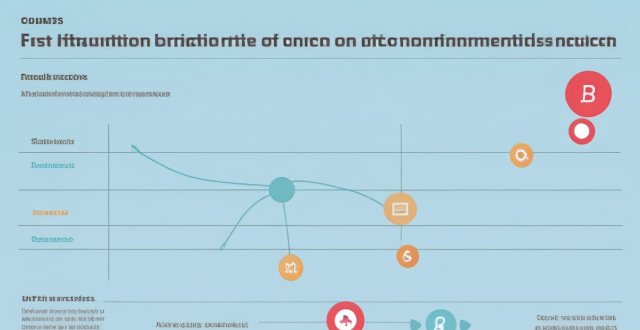Climate Debt

Can developed countries compensate for their climate debt ?
Developed countries have a moral and ethical duty to compensate for their climate debt by acknowledging historical responsibility, providing financial and technical support, and enacting policies that reduce emissions. This is crucial in addressing global inequities and mitigating the impacts of climate change. However, challenges such as quantifying climate debt and political will make compensation complex. International cooperation and agreements are necessary for effective action.

What is climate debt ?
Climate debt is a concept that suggests wealthy nations owe a moral and ecological debt to poorer countries due to their disproportionate contribution to global warming. The idea is based on the principle of "common but differentiated responsibilities," which recognizes that all countries have a responsibility to address climate change, but the extent of this responsibility should be based on historical contributions and capacity to take action. Key points include historical responsibility, capacity to mitigate, and vulnerability and adaptation. Wealthy nations have been industrializing for longer and have more resources to invest in renewable energy, while poorer countries often lack the financial and institutional capacity to adapt to the impacts of climate change. Addressing climate debt is seen as an essential component of any equitable and effective response to the urgent challenge of climate change.

How does climate debt affect developing countries ?
The concept of climate debt acknowledges the unequal impact of climate change on developing countries, which have contributed less to the problem but suffer more from its effects. This includes economic losses, social challenges such as health concerns and food insecurity, environmental threats like biodiversity loss and water scarcity, and political and legal issues including migration and international agreements. To address these challenges, initiatives like financial transfers, technology sharing, capacity building, debt forgiveness, and just transition policies are being implemented. Recognizing and supporting the needs of developing nations is crucial for achieving a more equitable and sustainable global future.

What are the consequences of not addressing climate debt ?
Addressing climate debt is crucial to mitigate environmental degradation, social injustices, and economic instability. Failure to do so exacerbates global warming effects like loss of biodiversity, sea level rise, and extreme weather events. It also leads to inequality, health issues, food insecurity, economic downturn, investment risks, and job losses. Recognizing and addressing climate debt is essential for achieving global sustainability goals and ensuring peace and justice worldwide.

What role do individuals play in addressing climate debt ?
The text discusses the concept of climate debt and the role individuals can play in addressing it. The author outlines six key areas where individuals can make a difference, including understanding the concept of climate debt, reducing personal carbon footprint, supporting sustainable practices, advocating for change, embracing a sustainable lifestyle, and educating future generations about the importance of environmental stewardship. Each section provides specific actions that individuals can take to contribute to reducing climate debt and mitigating the effects of climate change.

Who is responsible for paying off the climate debt ?
The concept of "climate debt" refers to the cumulative emissions of greenhouse gases by developed countries, which have contributed significantly to global warming and its associated impacts. This debt implies a moral and ethical obligation on the part of these countries to take action to mitigate and adapt to climate change, as well as to support developing nations in doing the same. Key Points: - Historical Emissions: Developed countries are primarily responsible for climate change due to their long history of high GHG emissions. - Economic Capacity: Wealthier nations have greater financial resources to invest in climate solutions. - Technology and Innovation: Developed countries often lead in technological advancements that can help reduce emissions and build resilience. - International Agreements: Under the United Nations Framework Convention on Climate Change (UNFCCC), developed countries have committed to providing financial and technical support to developing countries. - Loss and Damage: Developing countries, especially those most vulnerable to climate impacts, require assistance from wealthier nations to cope with losses and damages. - Equity and Justice: Addressing the climate debt is a matter of intergenerational and international equity and justice.

How can we ensure that climate debt is taken seriously by governments and corporations ?
Climate debt, a concept recognizing the cumulative GHG emissions primarily from industrialized nations and their impacts on vulnerable populations, calls for action. Strategies to ensure its serious consideration by governments and corporations include raising public awareness, implementing policy initiatives, utilizing financial mechanisms, enhancing international cooperation, promoting corporate responsibility, fostering innovation, ensuring accountability, and engaging in socially responsible actions. These efforts aim to create an environment where stakeholders actively work towards mitigating climate change's impacts.

What are some examples of successful climate debt repayment programs ?
Climate debt repayment programs aim to address the disproportionate impact of climate change on vulnerable communities and countries. Successful programs include the Green Climate Fund, Global Environment Facility, World Bank's Climate Investment Funds, and African Development Bank's Africa Adaptation Initiative. These programs provide financial support and resources for adaptation, mitigation, and sustainable development projects in developing countries. Key features include funding for biodiversity conservation, land degradation prevention, private sector involvement, and disaster risk reduction.

How can financial education help prevent debt ?
Financial education is crucial in preventing debt by empowering individuals with the knowledge and skills to make informed financial decisions. It covers understanding personal finance, smart borrowing practices, avoiding common pitfalls, and promoting healthy financial habits. By learning budgeting, saving, investing, credit score management, loan shopping, debt consolidation, and avoiding overspending, predatory lending, and credit card traps, individuals can reduce their risk of accumulating debt and enjoy greater financial stability and independence.

How do I manage debt effectively and pay it off quickly ?
Managing debt effectively and paying it off quickly requires a combination of discipline, strategy, and sometimes professional advice. Here are some steps you can take to get started: ### Assess Your Debt Situation - **Understand Your Debts**: List all your debts and identify high-interest debts. - **Determine Your Budget**: Calculate your monthly income and evaluate your expenses. ### Create a Debt Repayment Plan - **Choose a Repayment Method**: Avalanche or Snowball method. - **Make a Budget and Stick to It**: Allocate more funds to debt repayment and adjust as needed. - **Consider Refinancing Options**: Consolidate debts or negotiate with creditors. ### Implement Additional Strategies - **Increase Your Income**: Take on additional work or sell unwanted items. - **Reduce Your Expenses**: Cut out luxury spending and shop smarter. - **Improve Your Credit Score**: Pay on time and monitor your credit report. ### Seek Professional Advice if Needed - **Consult a Financial Advisor**: Personalized advice and debt management plans. - **Consider Debt Counseling**: Nonprofit credit counseling and beware of scams. Consistency and perseverance are key in paying off debt quickly.

What is the difference between credit management and debt collection ?
Credit management and debt collection are two distinct processes that involve handling financial transactions between a business and its customers. While both are crucial for maintaining a healthy cash flow, they serve different purposes and require different approaches. Credit management refers to the process of managing the risks associated with extending credit to customers, while debt collection involves recovering outstanding debts from customers who have failed to make payments as agreed upon. Both processes are essential for maintaining a healthy cash flow and ensuring the financial stability of a business.

How can we reduce our carbon footprint to minimize our contribution to climate debt ?
To minimize our contribution to climate debt, we canTo minimize our contribution to climate debt, we can several actions: using renewable energy we can reduce our carbon footprint through several actions: using renewable energy sources like solar and wind power; reducing energy consumption by unplugging unused appliances and optimizing home insulation; practicing sustainable transportation such as carpooling, using public transit, cycling, or walking; reducing waste and recycling by composting organic waste and reusing items; and supporting sustainable practices including buying local produce and choosing eco-friendly products. These conscious choices help us significantly lower our environmental impact and move towards a more sustainable future.

How do low-income countries manage their debt and avoid falling into a debt trap ?
文章讨论了低收入国家在管理债务方面面临的挑战,并提出了避免陷入债务陷阱的策略。这些策略包括:将债务管理作为经济政策的重点;多元化融资来源;与债权人协商优惠条件;建设机构能力;促进经济增长和发展。通过实施这些策略,低收入国家可以有效管理债务,实现可持续经济发展。

What is climate financing ?
Climate financing is essential for implementing projects that mitigate climate change and adapt to its impacts. It includes public sector involvement, private sector participation, support from multilateral and bilateral institutions, and innovative mechanisms like climate taxes and crowdfunding platforms. These financial resources are vital in addressing the global challenge of climate change by enabling access to capital for sustainable initiatives.

What are the common mistakes people make when trying to achieve financial freedom ?
Achieving financial freedom is a goal for many, but it's not always easy. Along the way, people often make mistakes that can hinder their progress. Here are some of the most common errors: ## 1\. Not Having a Clear Plan One of the biggest mistakes people make is not having a clear plan for achieving financial freedom. Without a roadmap, it's easy to get sidetracked or lose motivation. * **Solution**: Create a detailed plan that outlines your goals, timeline, and strategies for achieving them. ## 2\. Spending Beyond Their Means Many people fall into the trap of spending more than they earn, which leads to debt and financial stress. * **Solution**: Live below your means by budgeting, tracking expenses, and cutting unnecessary costs. ## 3\. Not Investing in Their Future Failing to invest in long-term goals like retirement or building wealth can set people back years or even decades. * **Solution**: Start investing early and regularly, even if it's just a small amount each month. ## 4\. Ignoring Debt Repayment Carrying high-interest debt can be a major obstacle to achieving financial freedom. * **Solution**: Prioritize paying off high-interest debt as soon as possible. ## 5\. Lacking Diversification in Investments Putting all your eggs in one basket can be risky. Many people make the mistake of not diversifying their investments. * **Solution**: Spread your investments across different asset classes to reduce risk. ## 6\. Not Educating Themselves About Finance A lack of financial knowledge can lead to poor decision-making and missed opportunities. * **Solution**: Educate yourself about personal finance through books, courses, and other resources. ## 7\. Failing to Review and Adjust Financial Plans Life changes, and so should your financial plans. Many people forget to review and adjust their strategies over time. * **Solution**: Regularly review your financial situation and adjust your plans accordingly.

What are some proven strategies for long-term wealth accumulation ?
Long-term wealth accumulation is a goal for many individuals, and there are several proven strategies that can help achieve this objective. Here are some of the most effective approaches: 1\. Start Early: The earlier you start saving and investing, the more time your money has to grow through compound interest. 2\. Live Below Your Means: Spend less than you earn and save the difference. 3\. Invest Wisely: Choose investments that align with your goals, risk tolerance, and time horizon. Diversify your portfolio to spread risk and maximize returns. 4\. Pay Off High-Interest Debt: High-interest debt like credit card balances can be a significant obstacle to wealth accumulation. Paying off these debts should be a priority. 5\. Increase Your Income: Increasing your income can provide more resources for saving and investing, which can help accelerate wealth accumulation. 6\. Plan for Retirement: Retirement planning is an essential component of long-term wealth accumulation, ensuring you have enough funds to support yourself during your golden years. 7\. Protect Your Wealth: Ensure that your hard-earned wealth is protected against unexpected events like lawsuits, accidents, or health issues.

How can green finance contribute to achieving the goals of the Paris Agreement on Climate Change ?
Green finance can contribute significantly to achieving the goals of the Paris Agreement on Climate Change by directing capital towards environmentally friendly projects and companies. It involves green bonds, loans, investment funds, and sustainable insurance products that support renewable energy development, low-carbon infrastructure, sustainable agriculture, forestry, mitigation, and adaptation to climate change. However, challenges such as risk management, return on investment, and lack of consistent data and standards need to be addressed to fully realize its potential.

How does climate information sharing help in mitigating climate change ?
Climate information sharing is vital for mitigating climate change by enabling informed decision-making, raising public awareness, supporting research and innovation, promoting international cooperation, facilitating adaptation strategies, and leveraging technology. It empowers governments, businesses, communities, and individuals to take actions that reduce greenhouse gas emissions and adapt to the changing climate.

What is climate financing and why is it important for combating climate change ?
Climate financing is crucial for mitigating climate change by funding initiatives that promote renewable energy, sustainable infrastructure, and adaptation to climate impacts. It enables international cooperation, drives innovation, supports policy development, and encourages private sector participation. Furthermore, it contributes to achieving global goals and enhances public awareness about climate issues.

How can climate financing be used to mitigate and adapt to climate change ?
Climate financing is a key mechanism for both mitigating and adapting to the effects of climate change. It involves funding initiatives such as renewable energy projects, green transport, energy efficiency improvements, and research into cleaner technologies for mitigation. For adaptation, it supports infrastructure resilience, agricultural adjustments, health system strengthening, and community-based strategies. International cooperation through global climate funds and technology transfer further enhances the impact of climate finance. Collaboration among various stakeholders is crucial to effectively utilize climate finance for a sustainable future.

How do climate predictions account for natural climate variability ?
Climate predictions account for natural climate variability by incorporating natural drivers, using past climate records, ensemble modeling, focusing on long-term trends, assessing uncertainties, scenario analysis, and peer review and revision.

What are the implications of ignoring the views of climate skeptics on climate policy ?
Ignoring climate skeptics' views can lead to lack of diversity in thought, potential for misinformation, loss of public trust, opportunity costs, and polarization. Policymakers should consider diverse perspectives and engage with all stakeholders for effective solutions.

How can we differentiate between legitimate climate science and the opinions of climate skeptics ?
This article provides guidance on how to differentiate between legitimate climate science and the opinions of climate skeptics. It emphasizes the importance of looking for peer-reviewed research, checking the source of information, evaluating the evidence, considering the motives of those making claims, and consulting experts in the field. By following these guidelines, individuals can make informed decisions about climate change and contribute to efforts to address this critical issue.

What is a climate refugee ?
Climate refugees are individuals who must relocate due to environmental changes from climate change, such as sea-level rise and extreme weather events. This displacement affects social structures, economies, and cultures, and there is a need for international cooperation and sustainable practices to address the issue. There is currently no specific legal status for climate refugees under international law.

How do international climate agreements influence national climate policy assessments ?
International climate agreements influence national climate policy assessments by setting global goals and targets, providing guidance on best practices, facilitating technology transfer and cooperation, enhancing transparency and accountability, and offering financial support for climate action. Examples of such agreements include the UNFCCC, Kyoto Protocol, and Paris Agreement.

What is the significance of climate finance in achieving the goals of global climate governance ?
Climate finance is vital for achieving global climate governance goals, supporting mitigation, adaptation, sustainable development, innovation, cooperation, transparency, policy integration, capacity building, and private sector engagement.

How can climate resilience help mitigate the impacts of climate change ?
Climate resilience is a crucial strategy for mitigating the effects of climate change. It involves reducing vulnerability, enhancing adaptive capacity, promoting sustainable development practices, and fostering social cohesion. By implementing these strategies, communities can become more resilient and better able to cope with the impacts of climate change.

How do climate summits contribute to global efforts to combat climate change ?
Climate summits play a crucial role in the global fight against climate change by setting targets and goals, encouraging international cooperation, promoting policy and technological innovation, raising awareness and mobilizing action, and financing climate action.

How can climate financing help developing countries ?
Climate financing is essential for developing countries to adapt to and mitigate climate change. It funds infrastructure projects, capacity building, renewable energy, sustainable land use, and research & development. These efforts help build resilient economies and reduce environmental impact.

How can we use climate predictions to mitigate the effects of climate change ?
Climate predictions are vital in mitigating climate change impacts. They help in adaptation planning, guiding mitigation strategies, informing policy development, raising awareness, and driving research and innovation. By understanding future climate conditions, we can take proactive measures to reduce the effects of climate change on our environment and society.